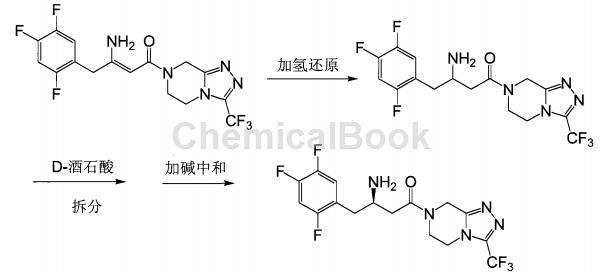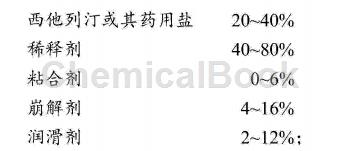background and overview[1]
phenyl acetate is a colorless liquid, miscible with ethanol, ether, chloroform and acetic acid, and slightly soluble in water. it has strong refractive properties (same as glass) and has a phenol smell. it is mainly used as a solvent and an intermediate in organic synthesis. phenyl acetate can also be used to obtain hydroxyacetophenone through translocation reaction, which is used to treat acute and chronic jaundice hepatitis, cholecystitis and other diseases.
preparation[1] [4]
at present, the industrial production of phenyl acetate is mainly produced by the reaction of sodium phenolate and acetic anhydride. generally, phenol is added to a sodium hydroxide solution with a mass concentration of about 15%, stirred and dissolved to prepare a sodium phenolate solution, acetic anhydride is added, and the reaction is carried out at 30-40°c. the obtained reaction product is washed with water, dilute sodium hydroxide solution, and water in sequence, dried with calcium chloride, and then distilled to obtain the finished product. another method of operation is to heat phenol and acetic anhydride together to boiling, reflux, and then wash with water, alkali, and water in sequence after cooling. after drying with anhydrous sodium sulfate, collect the 190-195°c fraction into phenyl acetate by distillation. it can be seen that the existing process operations are complicated, the product processing steps are many, or the reaction conditions are relatively harsh, and the reaction uses acids and alkalis to pollute the environment.
method 1, cn201210050656.5 a preparation method of phenyl acetate provides a preparation method with simple process, low cost and good selectivity of phenyl acetate. at a temperature of 60° c. and a pressure of 0.5 mpa, with ozone (15% volume ratio, the remainder being oxygen) as the oxidant, acetophenone, ozone and the solvent acetone were reacted at a molar ratio of 1:1:1. the results of the reaction for 2 hours are as follows: acetophenone conversion rate is 25%; phenyl acetate selectivity is 41%. compared with traditional methods, the present invention overcomes the problems of complex production processes, long oxidation time, low efficiency, high cost and harmful emissions. the present invention uses ozone as the oxidant, without adding any inhibitor or initiator to the raw gas, and has high selectivity of phenyl acetate. especially in the presence of a titanium-containing catalyst, the selectivity of the product phenyl acetate is further improved. the production process of the method of the invention is simple, easy to control, and is conducive to industrial production and application.
method 2: provide a new green method for preparing phenyl acetate.
cn201210537631.8 by screening ionic liquids, phenyl acetate is synthesized using ionic liquids with good thermal stability, difficult to volatilize, and recyclable as catalysts and solvents. the specific technical solution is as follows: using ionic liquids formed from imidazoles or lactams or quaternary ammonium cations and boron tetrafluoride or phosphorus hexafluoride or hydrogen sulfate or dihydrogen phosphate or p-toluenesulfonate anions as catalysts and solvents , using phenol and acetic anhydride as raw materials to react to synthesize phenyl acetate; after the reaction is completed, water is added to separate the phenyl acetate, and the ionic liquid dissolved in water is dehydrated and recycled. the reaction formula is as follows:

apply [2-3]
1. used in the synthesis of p-hydroxyacetophenone
p-hydroxyacetophenone, because its molecule contains hydroxyl and ketone groups on the benzene ring, is often used as an intermediate in organic synthesis to react with other compounds to synthesize many important substances. generally used to synthesize pharmaceutical intermediates (α-bromo-p-hydroxyacetophenone, choleretics, antipyretic analgesics and other drugs), and others (spice, feed, etc.; pesticides, dyes, liquid crystal materials, etc.). cn201610584571.3 provides a synthesis method of p-hydroxyacetophenone, which adopts a side-effect-assisting cycle method (three consecutive operations, two cycles), and uses o-dichlorobenzene containing o-hydroxyacetophenone as a reactant during the cycle. , effectively improves the yield of p-hydroxyacetophenone, rationally recycles by-products, is suitable for industrial production, and reduces production costs. the basic operating process of the present invention is: using phenol and acetic anhydride as raw materials, concentrated sulfuric acid as a catalyst, through esterification reaction, water washing, alkali adjustment, extraction and concentration, to obtain phenyl acetate; then, under the catalysis of aluminum trichloride, add reaction of o-dichlorobenzene, steam distillation, activated carbon filtration, and crystallization to obtain crude p-hydroxyacetophenone; then use the o-dichlorobenzene layer containing o-hydroxyacetophenone obtained by layering after the aforementioned reaction to perform the process twice more cycling reaction produces p-hydroxyacetophenone with higher yield. the chemical reaction equation in the cyclic reaction is as follows:

2. synthesis of p-methoxyacetophenone
p-methoxyacetophenone is mainly used in the production of intermediates for flavors and fragrances, medicines and cosmetics. for example, p-methoxyphenylacetic acid can be prepared from p-methoxyacetophenone and used as an intermediate for puerarin. cn200710038394.x provides a method for synthesizing p-methoxyacetophenone using phenol. the method for synthesizing p-methoxyacetophenone of the present invention includes the following steps: (1) acylation reaction between acetonitrile and phenol is carried out under the catalysis of protonic acid at 95-110°c to generate phenyl acetate; (2) phenyl acetate under the catalysis of alkyl sulfonic acid, a rearrangement reaction is carried out at 85-90°c; (3) the product of step (2) is separated to obtain p-acetylphenol; (4) the product of step (3) is generated by methoxylation reaction p-methoxyacetophenone.
main reference materials
[1] cn201210050656.5 preparation method of phenyl acetate
[2] cn201610584571.3 a synthesis method of p-hydroxyacetophenone
[3] cn200710038394.x a method for synthesizing p-methoxyacetophenone
[4] cn201210537631.8 a method for preparing phenyl acetate using ionic liquid.��


